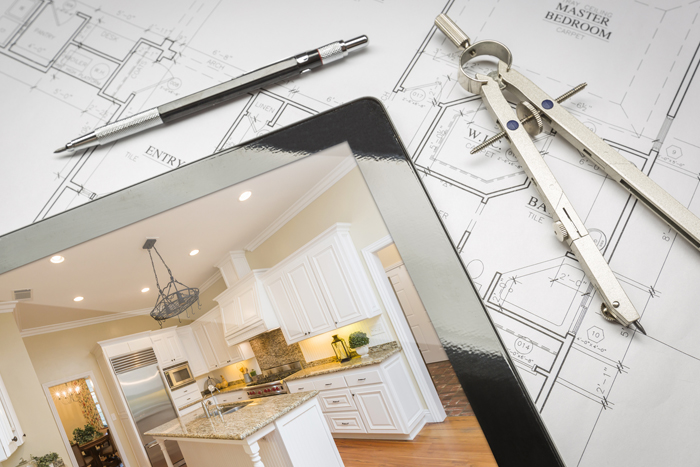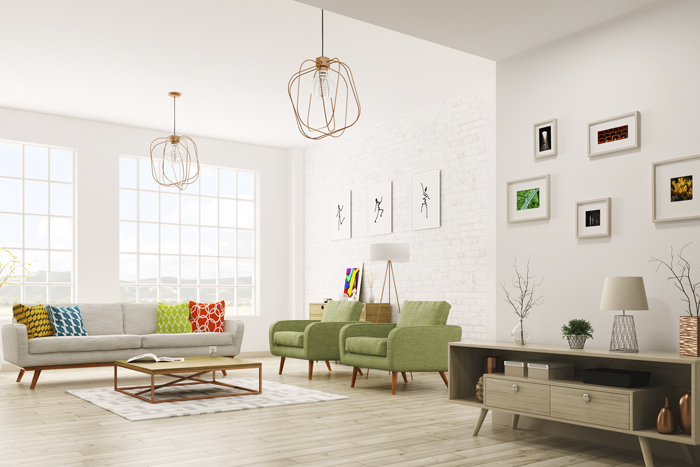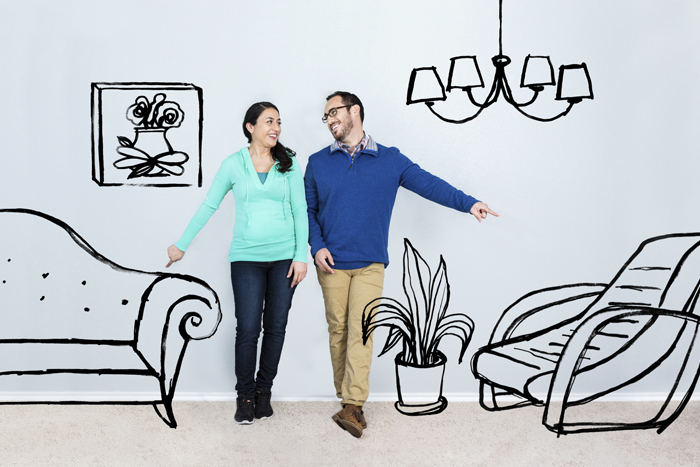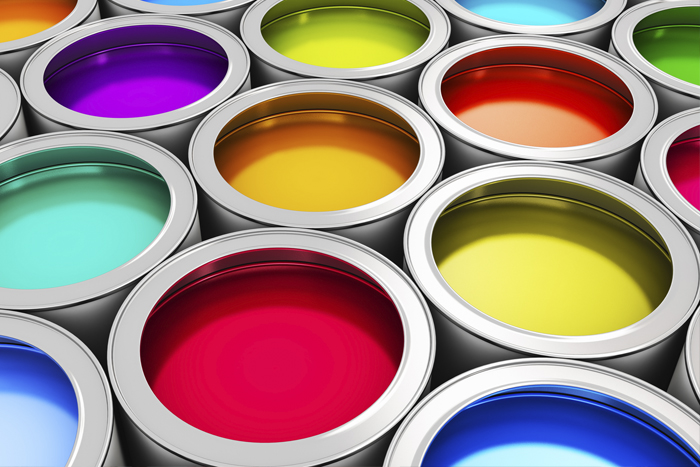How to Revamp an Old Kitchen on a Budget
If the cost of totally rehabilitating your worn-out kitchen is out of the question right now, there are a number of freshening techniques that can rejuvenate the room.
If you love wood furniture or antiques and have the space, try adding a decorative hutch or carved hanging shelf, which will not only be pretty but will also provide additional storage space.
If you have a very old, dark kitchen with damaged wood cabinets, try sanding down the rough spots and using high-gloss white paint on the entire room. Paint everything except the countertops, resurfacing them with new, brightly colored plastic laminate. The transformation will be miraculous. Tie the accent color of the countertop into some decorative accessories that can be hung on the white walls. You could mat a great poster in the accent color or frame a collection of menus from your travels.
If you don’t want to use high gloss paint on the cabinets, here are some other suggestions:
- Plastic lamination. While this technique has been available for a long time, the new choices of laminations are outstanding. There are new materials that simulate granite, stone, and travertine as well as new hi-tech surfaces — ribs, grids, geometric patterns and other textures. These are available in high gloss and matte finishes. There also are some great patterns inspired by the Italian design group Memphis. These crazy mini printed laminates are available in tiny squiggle patterns, large grids and other new wave designs reminiscent of the ‘50s. These new mica surfaces, old countertops or cabinets. A kitchen remodeler may charge $1,000 or more to do counters. But this is generally not a job for do-it-yourselfers; the laminates will have to be cut to order in a factory, anyway.
- Moldings. Available in various widths at specialty lumber yards, these can be applied to the surfaces of plain cabinet doors and then painted either to match or contrast.
The style of the molding can run the gamut from century French to 18th-Century English. It is best to pre-paint the cabinets and the moldings before you apply them. If they are the ready-made type, they can go up with special adhesive glue. If they are put in place by a professional carpenter or cabinetmaker, the moldings will most likely be of a heavier scale and will be nailed in place. If that’s the case, you will need a very steady hand or a professional painter to accent the moldings after the base coat is applied.
- New hardware. If you are going to paint or refinish the cabinets, investigate new hardware as well. Don’t just consider the external decorative hardware, but inquire about new self-closing decorative hardware, concealed hinges and even the possibility of using new, full-extension drawer slides. Some people like the “no hardware look,” commonly referred to as touch latch. I don’t recommend this for a kitchen. The cabinets take enough wear and tear without sticky fingers constantly touching door surfaces to spring the touch latch open.
When you’re satisfied with the cabinets, here are some other areas where you might consider improvements:
- New lights, maybe even a skylight, can freshen a kitchen, but take into consideration the angle of your roofline and the direction your kitchen faces. A skylight in a kitchen with a southern or western exposure can make the room very hot, even on a winter afternoon. When you are planning to brighten up the kitchen with natural or man-made light, keep in mind that this room is usually the hottest in the home because of all the cooking.
- Fluorescent lights are the coolest, but most people prefer to use recessed high-hats, which will not be too hot if you stick to 100-watt bulbs and scatter them around the room. The new mini lights, installed under shelves and where the cabinets meet the floor, can light the kitchen for many uses, without the need to turn to overhead lights.
- Color. A new color scheme can certainly be a brightener, but there are some guidelines for color in the kitchen that should be considered. Too much of a hot or warm color can be a problem. If you want a pink, orange, red or yellow in the kitchen, try using a cool complementary color — blue, green or purple — in a subtle way to keep the room below the boiling point. Plants are an obvious way to introduce cool greens, but if you can’t be bothered with Mother Nature, you could cool things off with a collection of bottle-green canisters.
- Wall coverings. Selecting a paper pattern for the kitchen is tricky. This room is one of the most used rooms in most households, with many different activities taking place. Take care not to overload the room visually.
It may be best to choose a quiet background. A textured rather than patterned wall cover provides a good backdrop, but an overly textured surface may pick up a greasy film and provide a natural resting place for dirt and grime. If textures are your choice, a washable vinyl that simulates grass cloth, string or stucco may be your best bet.
If you’d like colorful ceramic tile on the wall but you can’t afford the hefty tariff, try some of the tile-patterned wallpapers.
Finally, if one of your appliances is worn out — for instance, if tape is the only thing holding together the vegetable drawer of the refrigerator — consider replacing it.
Many people keep putting off such a purchase until they are ready to do the entire kitchen. The cost of replacing all the appliances is very high. A good way to get the project off the ground is to start with one appliance. The only drawback is that the dream appliances may not fit the space. A kitchen remodeler may draw you a plan for about $200, which could be applied to a later job. Or a remodeler can always design custom cabinets to fit around the new appliances.





